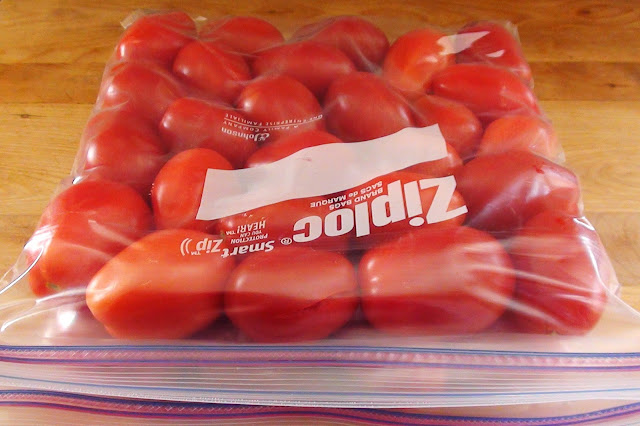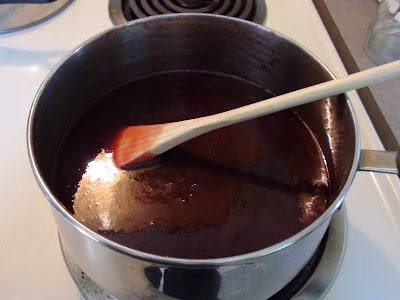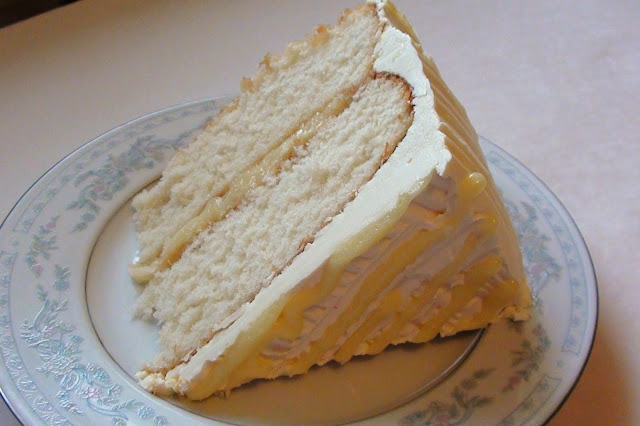Hungarian jam is thick and plum jam is probably the thickest. Making plum jam traditionally is a chore, you have to stand at the stove stirring for hours at end and all the while hot jam is spurting on you, on the stove and its vicinity. I don’t know exactly where the oven baking idea came from, certainly there are recipes on the web, but from what I have seen they are not as thick as they should be. Great aunt Lizi baked it in the oven forty years ago and she prided herself with her “no splatter jam”.
For convenience baking time is divided into 2 parts. Time the first part at 300F for 10 hours. After that reduce the temperature to 90F and bake at that temperature for 10 more hours. This part is best done overnight. The following morning take out the black deliciousness and pack it into jars. Once this jam cools, it will be even thicker. This one is the perfect jam for making barátfüle.
OVEN BAKED PLUM JAM
12 cups of crushed plums
6 cups of sugar
• Use the ripest plums you can find.
• Wash the plums well and drip dry.
• Cut plums in half and remove the stones.
• Crush the plums in a food processor.
• Preheat the oven to 300F.
• Place the crushed plums in a large saucepan.
• Add the sugar and stir.
• Gently cook until the color is a vibrant purple.
• Transfer the hot fruit mix to a large pan and place in the preheated oven.
• Do not cover.
• Bake the jam at 300F for 10 hours.
• Reduce the heat to 90F and leave the jam in the oven for 10 hours.
• The following morning pack the jam into hot sterilized jars.
• Wipe the rims, place on the snap lids and screw on the caps. Check the box and make sure to follow manufacturer’s suggestion for softening the cap seals. In the past we had to boil the caps for 5 minutes to soften the seal. Recently purchased caps had to be heated only with boiling water.
• Place the jars in 210F oven for 40 minutes or until jars are very hot to the touch.
• Prepare a dry pack: line a basket or a box with tea towels.
• Remove from the hot bottles from the oven and transfer them to the prepared dry pack.
• Encase the dry pack into an old quilt or several blankets and leave it to cool.
• By evening the jars will still be warm; they will also be completely sealed.
• Use the ripest plums you can find.
• Wash the plums well and drip dry.
• Cut plums in half and remove the stones.
• Crush the plums in a food processor.
• Preheat the oven to 300F.
• Place the crushed plums in a large saucepan.
• Add the sugar and stir.
• Gently cook until the color is a vibrant purple.
• Transfer the hot fruit mix to a large pan and place in the preheated oven.
• Do not cover.
• Bake the jam at 300F for 10 hours.
• Reduce the heat to 90F and leave the jam in the oven for 10 hours.
• The following morning pack the jam into hot sterilized jars.
• Wipe the rims, place on the snap lids and screw on the caps. Check the box and make sure to follow manufacturer’s suggestion for softening the cap seals. In the past we had to boil the caps for 5 minutes to soften the seal. Recently purchased caps had to be heated only with boiling water.
• Place the jars in 210F oven for 40 minutes or until jars are very hot to the touch.
• Prepare a dry pack: line a basket or a box with tea towels.
• Remove from the hot bottles from the oven and transfer them to the prepared dry pack.
• Encase the dry pack into an old quilt or several blankets and leave it to cool.
• By evening the jars will still be warm; they will also be completely sealed.



















































